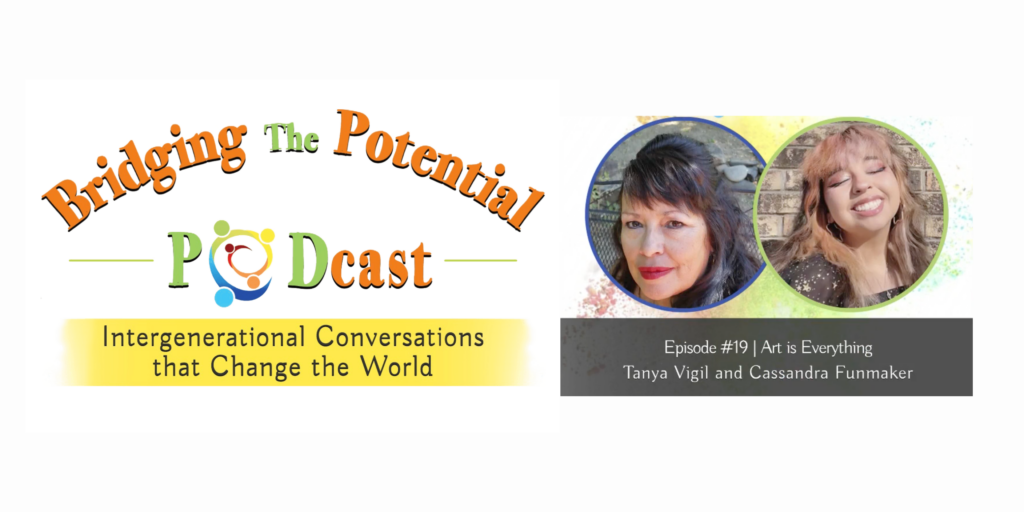What happens when you bridge the experience, education, and expertise of elders with the curiosity, energy, and innate wisdom of the youth? It’s simple. Everyone grows and the world changes for the better — one conversation, one connection, one collaboration at a time.
Listen in and learn from people of all ages who are not only concerned about some of the big real-world problems we are facing, but doing something about it!
From storytelling to social justice, quantum physics to technology, mindfulness to consensus building, and entrepreneurship to humanitarianism, we are taking on the topics that we believe will lead to transformational change in our culture and world.
Bridging the Potential Podcast, https://livingthepotential.com/the-podcast/

Renee Beth Poindexter
- I love these conversations were listening after listening to a youth dreams and aspirations and concerns. We Connect them with an elder or a mentor who has experience and wisdom to share in the topic that our youth is most interested in and who’s open to learning. And from the innovative spirit of the youth. This is reciprocal learning at its best.
- It’s the arts that integrates a new way of being in relationship with people. And it includes so many other subjects in the process.
- It’s very exciting to see this because we’re living in the 21st century, we need to learn to collaborate in ways where art opens up the space, for the communication for the collaboration for the critical thinking, in community, which you say intergenerational was the magic that made it happen. The grandmas, papas, baby sisters and everybody participating in it, just raise the bar on engagement. So the enthusiasm for learning went up. Huge!
Tanya Ocana Vigil
- It’s a way of healing the Earth. It’s also a way of healing people that, especially nowadays, the dance, really engulfs you, brings you in and can really help you balance. It’s a form of medicine, through the type of shoes that we wear on our feet, to the rattles to the drums. And it’s all art as well
- I’ve been coordinating this program and my idea was to bring in artists to share a special component that they would not normally get through the art teachers, which also we’re very fortunate to have art teachers in our elementary schools, because that was always left on to the classroom teacher. So students also have that opportunity to participate with art teachers. But my visiting artists program consists of artists coming in and teaching jewelry, belting, fused glass, mosaic, murals, printmaking, music, dance, and theater. So we are under the four strands, which really is great because it’s, you know, the the amount of talent that our students have, and some of them don’t necessarily want to participate in singing or dancing or acting, or doing art, but because there’s those four strands, some of them feel very comfortable in, in in the various arts that we offer.
- That’s the thing about art – that it’s all in essence, everything is an essence. And so you can feel it, you can taste it, and you can sense it.